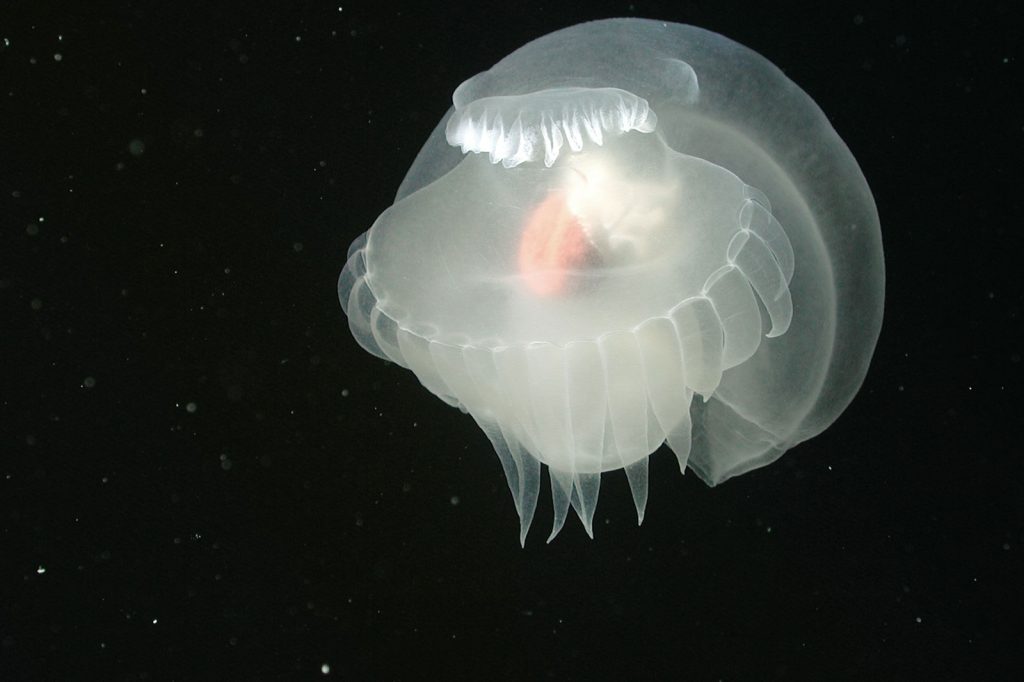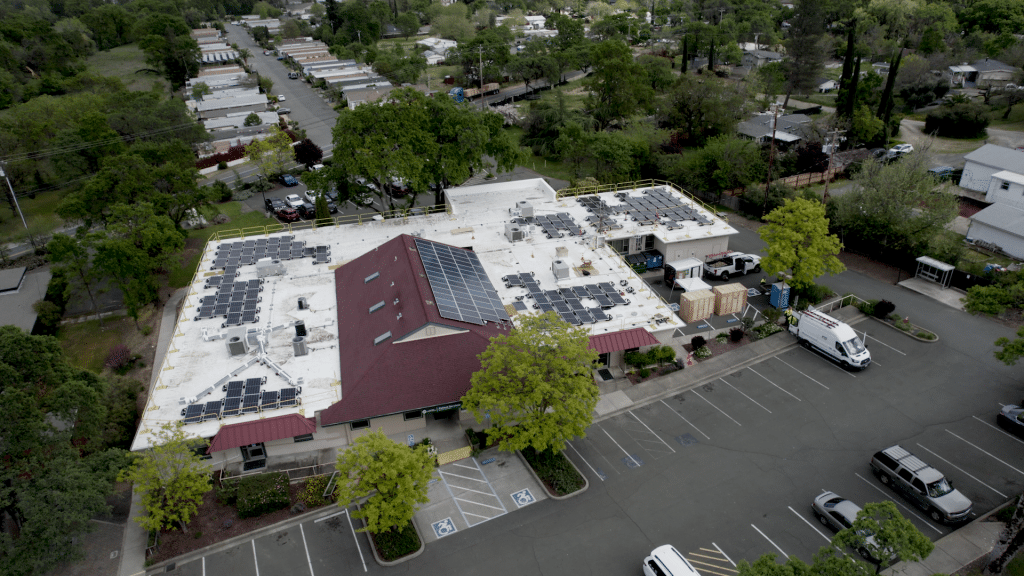Since its inception in 1991, Lucile Packard Children’s Hospital Stanford has stood as a paragon of world-class pediatric and obstetric care. It has not only become a center for cutting-edge medical research and treatment, but also a place where children and their families can find comfort, and even joy, in the midst of difficult times.
The hospital's legacy is deeply rooted in the vision of its namesake, Lucile Packard, who believed that every child deserved the highest standard of care, regardless of their circumstances. This belief continues to guide the hospital’s mission of providing extraordinary care, fostering continual learning, and achieving breakthrough discoveries.
Located on the Stanford University campus, the hospital is a critical healthcare provider for families in the Bay Area in California and far beyond. As the only healthcare system in the Bay Area exclusively dedicated to pediatric and obstetric care, the Stanford Medicine Children’s Health network centers around Lucile Packard Children’s Hospital. With more than 150 medical specialties, the hospital’s centers of emphasis include brain and behavior, cancer, heart, pregnancy and newborn, pulmonary, and transplant, alongside a wide range of services for babies, kids, and pregnant moms. The hospital is consistently ranked on the U.S. News & World Report annual list of America’s top children’s hospitals.
Lucile Packard’s Vision
In the fall of 1933, when David Packard and Lucile Salter first met, Lucile was a volunteer at the Stanford Convalescent Home for Children, a facility that cared for children with illnesses such as polio and tuberculosis. Lucile cared deeply for the health and well-being of children, and over the next few decades she expanded her commitment to children’s causes. She eventually became chair of the board of the Children’s Health Council and worked closely with the Stanford Convalescent Home to help it evolve into what is now known as Lucile Packard Children’s Hospital Stanford.
Lucile traveled across the country to learn from other leading children’s hospitals, talking to families, children, and care team members to understand how to provide comprehensive support that treats the whole child, not just the disease.

In 1986, she and David Packard dedicated $70 million to construct a new children’s hospital facility that incorporated labor and delivery as well as newborn nurseries, believing strongly that babies should be with other children and that new parents should have ample opportunity to bond with newborns. The new facility was named in memory of Lucile, who was deeply involved in the design of the hospital but passed away before it opened in 1991.
An Expansion of Care
The hospital continues to be a beacon of hope and healing for children and families in need, attracting families from near and far, providing them with unparalleled access to renowned medical expertise and innovation.
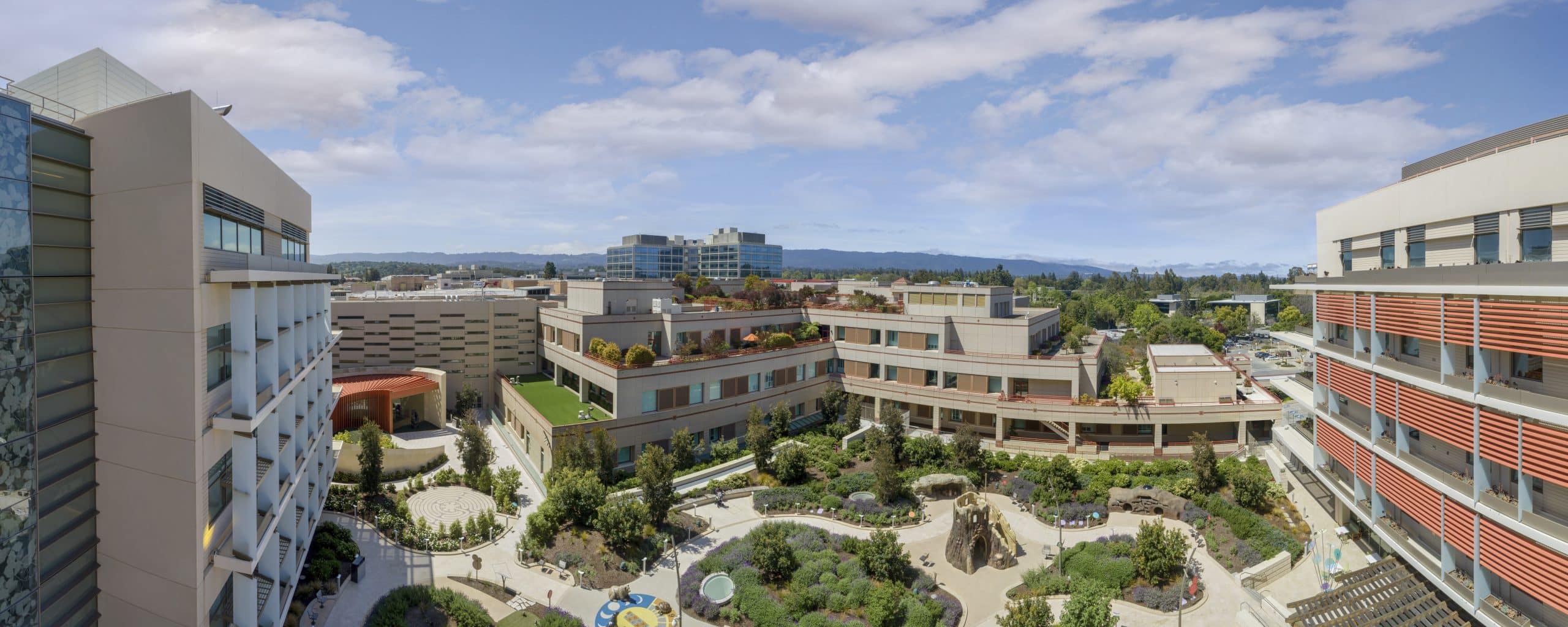
In December 2017, Lucile Packard Children’s Hospital Stanford doubled its size, opening its new Main building and adding 521,000 square feet and 149 new patient beds to become one of the most technologically advanced, family-friendly, and environmentally sustainable children’s hospitals in the nation.
Then, in 2022, with a $100 million gift from the David and Lucile Packard Foundation, the hospital began transforming its original West building to better serve expectant, laboring, and new parents and newborns, including new neonatal intensive care units with private rooms and upgraded facilities for high-risk pregnancies.
Built for Children
In the spirit of Lucile’s belief that the hospital should center the experience of children, the hospital’s design is focused on creating a calm setting that puts children more at ease. Low countertops at nurse’s stations foster interaction between children and care teams. In patient rooms, TV screens read the badges of medical workers as they enter the room and display their picture, name, and role so that children and parents can understand who is visiting them and why. The main lobby and hallways are laid out with an easy, fun, and educational wayfinding system, featuring textured animal footprints, special animal ambassadors assigned to each floor, and interactive sculptures.
Play is a powerful and therapeutic part of the healing process for children as laughter, stimulation and distraction. The hospital includes spaces specifically designed for play and learning. The Story Corner allows kids to read or enjoy storytelling time, while the Interactive California Coast Wellness Eco Zone invites children to use their body movements to change images on the screen, learning about different ecosystems.
Sophie’s Place, the Broadcast Studio, provides equipment for children to create, record, and edit new video content that can be shared via the in-room entertainment system. PackardVision, the in-room SmartTV system, serves as an educational resource and entertainment outlet, featuring feeds from the Broadcast Studio and access to the STEAM gaming system.
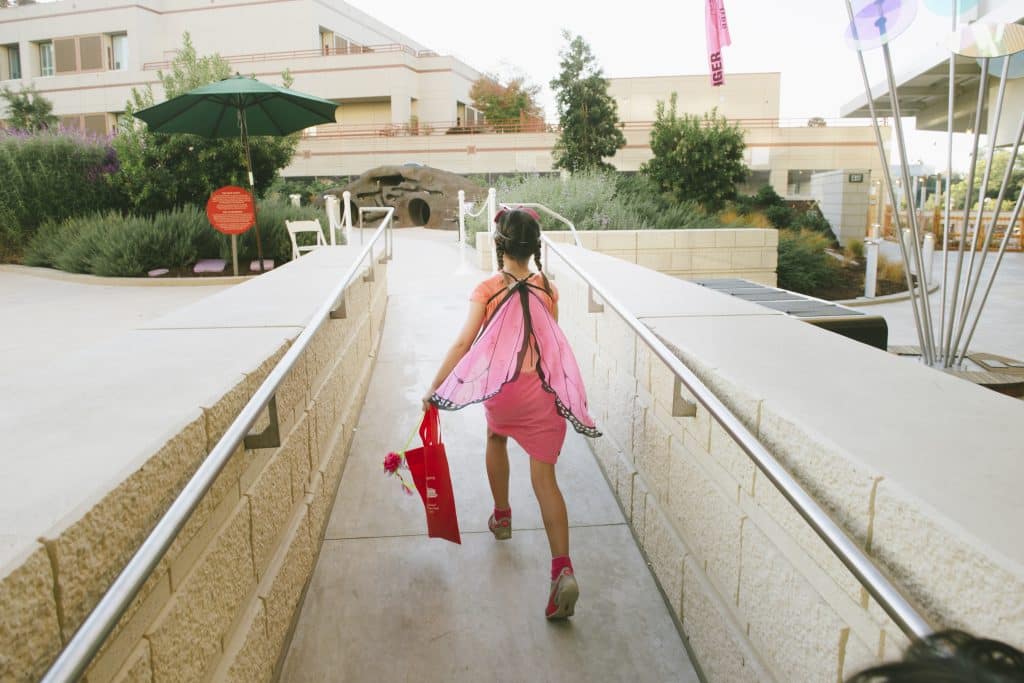
The design of the hospital is also rooted in Lucile’s passion for the healing power of nature. Each floor is themed for a different California ecosystem – shores, forests, valleys, deserts, foothills, and mountains. Even the elevator bay is designed to look like the trunk of a giant redwood tree.
Open space and ample sunlight are features throughout the hospital and its surrounding garden areas. The hospital has more than three acres of gardens for patients and staff to enjoy. The Dunlevie Garden hosts trees, flowers, and paths for children to explore, along with accessible and interactive features like a sundial and redwood fort. Packard Children’s Hospital brings nature to children and families as much as possible.
Sustainability
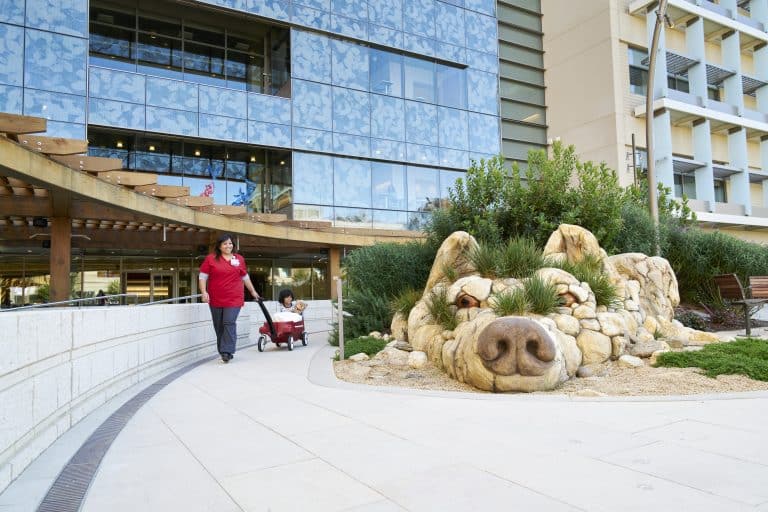
Protecting the health of children also means protecting the planet they are growing up on. The Main building has been awarded LEED Platinum certification by the U.S. Green Building Council (USGBC), making it one of just five hospitals in the world to earn this highest designation for sustainability. The design includes water-conservation features, renewable energy use, recycling programs, and landscape concept conservation, all aimed at reducing the hospital’s environmental footprint.
The Lucile Packard Foundation for Children’s Health
The Lucile Packard Foundation for Children’s Health unlocks philanthropy to enhance child and maternal health at Lucile Packard Children’s Hospital, the Stanford School of Medicine, and beyond, supporting programs that make healthcare more accessible for children with complex medical needs. With more than 40% of Packard Children’s Hospital patients relying on public insurance, the Foundation’s donor community helps ensure exceptional, cutting-edge care for families, regardless of their financial circumstances. Fundraising efforts extend beyond medical treatment to helping provide personalized care, social support, and essential resources like lodging and meals, ensuring holistic healing. Philanthropic support also drives innovation, supports clinical trials, and advances health equity. In addition, as a grant maker, the Lucile Packard Foundation has invested more than $50 million since 2000, becoming a national leader in healthcare systems change for children and youth with special health care needs.
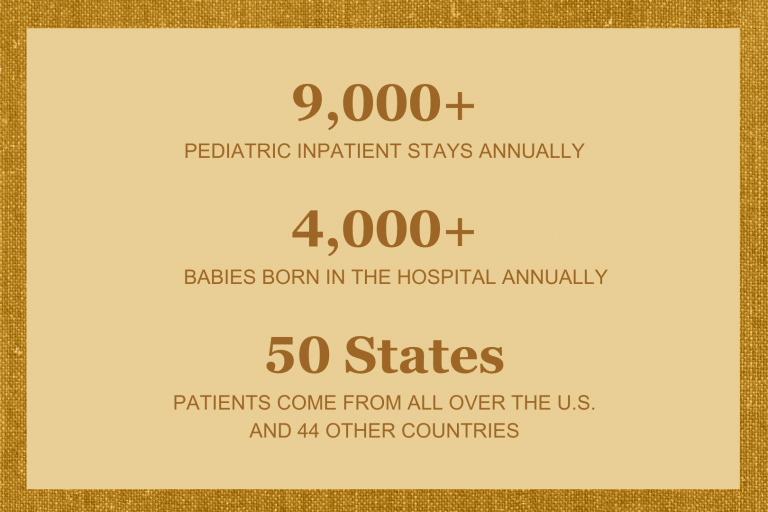
Partnership with The David and Lucile Packard Foundation
The David and Lucile Packard Foundation continues to support Lucile Packard Children’s Hospital Stanford. The recent $100M gift to transform the West building brings the Packard Foundation’s total giving to the Hospital to more than $600M.
The Packard Foundation has long been committed to helping children get a healthy start in life. Recognizing that a healthy start begins with healthy moms and healthy births, the Packard Foundation works to ensure the systems that support moms, families, and children are stronger, better connected, and more equitable.
Lucile Packard Children’s Hospital Stanford continues to honor Lucile Packard’s vision by providing world-class care to children and families, integrating cutting-edge technology, and fostering a nurturing environment. As a nonprofit hospital, it remains dedicated to serving all children, regardless of their family’s ability to pay, ensuring that every child has the opportunity to grow up healthy, ready for school, and on track to reach their full potential. As it continues to evolve and expand, the hospital remains dedicated to its mission of delivering the highest quality care to every child, embodying Lucile Packard’s enduring legacy of compassion and excellence.



